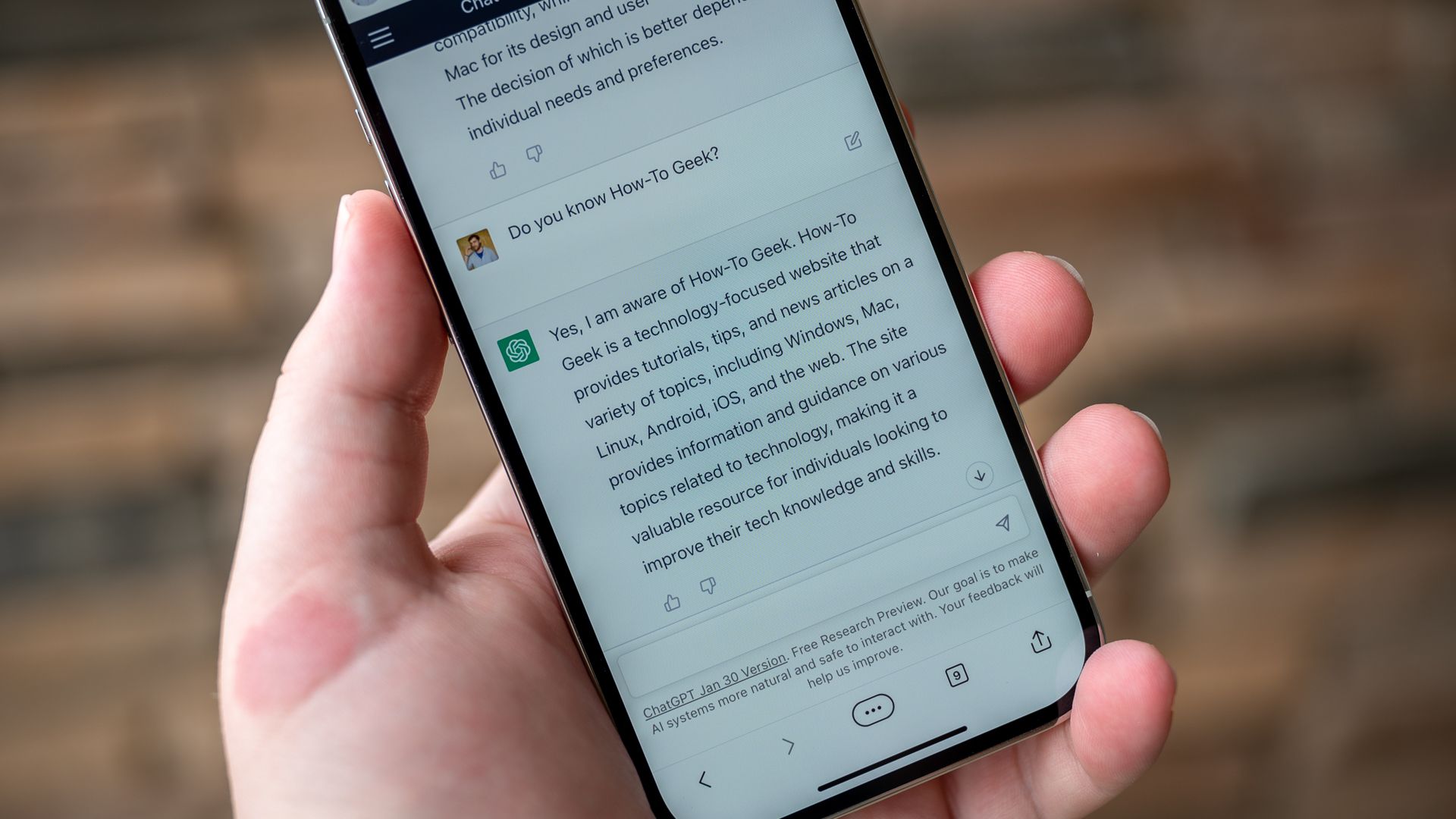Key Takeaways
- Activate ChatGPT's conversation mode by opening the app, going to Settings, and toggling Voice Conversations on. Start a new chat, tap the headphones icon, and ask ChatGPT for help practicing the language of your choice.
- ChatGPT offers dynamic conversations, specific scenarios, and answers to specific questions, making it excellent for learning and practicing a new language.
- While ChatGPT has limitations like American accents and no long-term structure, it provides personalized language learning and access to cultural and historical context.
OpenAI has rolled out the conversation feature to ChatGPT Plus subscribers using the ChatGPT mobile app. As with regular ChatGPT, the uses for this are almost limitless, but we've already found that it's excellent learning and practicing a new language.
How to Activate ChatGPT's Conversation Mode
Before you can start practicing a language with ChatGPT in conversational mode, you need to activate it. Assuming you're a ChatGPT Plus subscriber and also that you've installed the iOS or Android apps, here's how to activate the feature.
Open the app, and open its menu by tapping the three horizontal bars. Choose Settings and open Beta Features.
Toggle Voice Conversations on.
Preview and select the voice if your choice. You can change this later in settings under the Speech section.
To initiate a conversation, start a new chat (or open a previous chat) and tap on the headphone icon.
Then say something to ChatGPT and wait for it to respond.
How to Practice and Learn a Language With ChatGPT
Now that you're in conversation with ChatGPT, you simply have to ask it for help with your language learning. While every conversation is different, in general it will ask you what sort of learning you want to do, and other details that might be relevant.
You can tell it what your proficiency level is or even to help assess your proficiency level. I spent about an hour practicing my (terrible) Japanese with ChatGPT and in my opinion it has three main use cases that set it apart from using an app such as (for example) Duolingo:
- Dynamic conversations that can naturally go in any direction, mimicking a real-world conversation with someone else in the target language.
- You can ask for very specific scenarios, which can help you prepare for specific situations, such as business meetings or common situations you may face on vacation.
- Answering very specific questions you have that aren't covered by one size fits all language courses.
I tried a few different things, such as asking ChatGPT to test my vocabulary by giving me sentences to translate. Then I asked it to play the part of a store clerk, hotel clerk, etc., as we practiced scenarios.
One awesome thing about using ChatGPT for language learning in this way is the level of personalization that it allows. You can expand and interrogate any part of what you're practicing, and get cultural and historical context that's missing from traditional language learning courses. This is more like having a dedicated language tutor, but one that only costs $20 a month and is available 24/7.
Don't forget that after your conversation has ended, you can still review the text transcript like a normal ChatGPT conversation. This was especially useful for Japanese, since the text contained the relevant Kanji and Kana, which you of course can't hear.
Language Limitations With ChatGPT
While my limited time with this new conversational feature as a language learning aid has shown a lot of promise, there are still some things about the way this feature is currently implemented that make it less than perfect. At least, it isn't ideal if you want to use it as your only language-learning aid.
First, unlike a language course, there's no curriculum design here. Even with ChatGPT's ability to remember the history of a given thread, you're not going to get the long-term purpose and structure you'd get with a course. So it's best to use it as a supplement to a course, or as a targeted practice tool.
Second, all of the voices that are available right now have distinctly American accents. While, to my ear at least, the pronunciation of non-English words seemed competent, the American accent remains to one degree or another. These synthesized voices are absolutely cutting-edge, but it's not going to be like listening to a native speaker.
Finally, how well this works will really depend on the specific language you're targeting. It did pretty well with Japanese and German (again, from my limited viewpoint), but did not do well with Afrikaans (my first language).
As with all things AI, these limitations are likely to shift rapidly, but ChatGPT is such an open-ended tool that you're bound to run into some snags depending on the specific mix of factors involved in your language learning journey.






